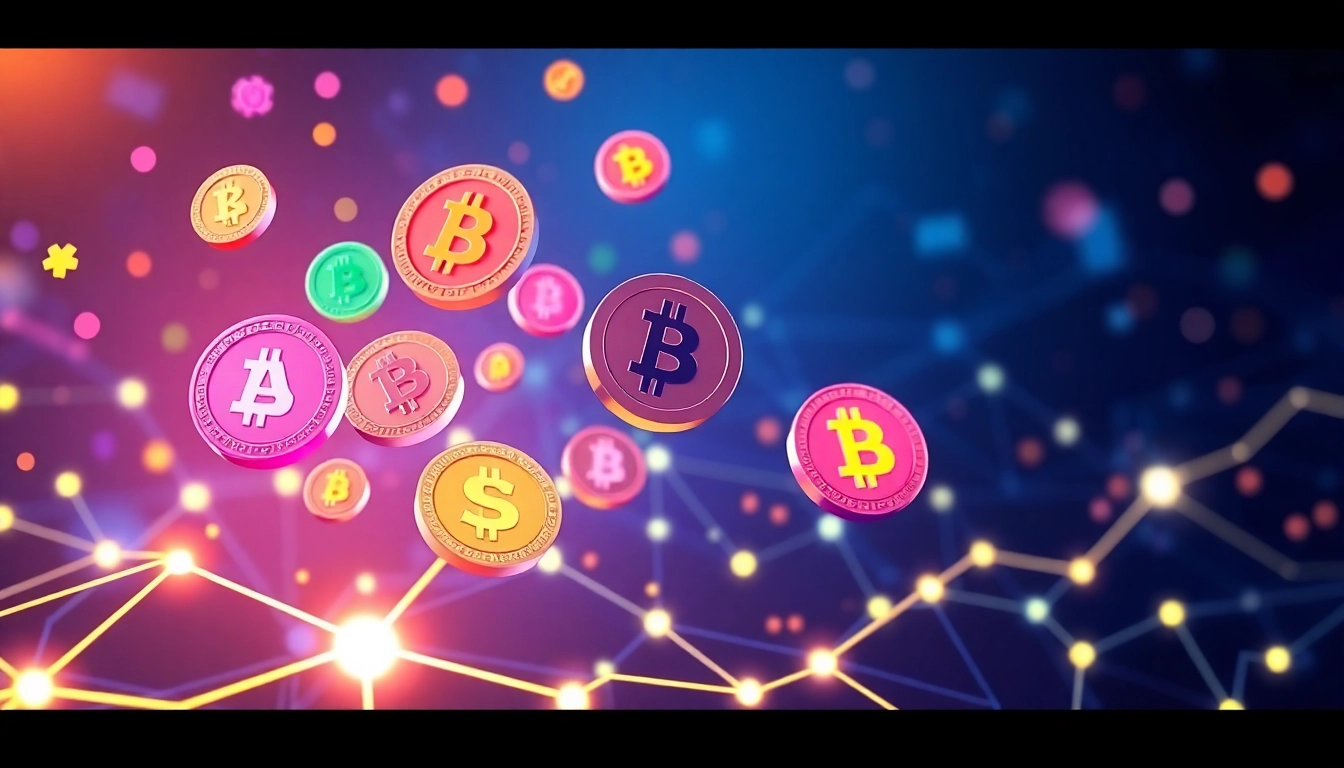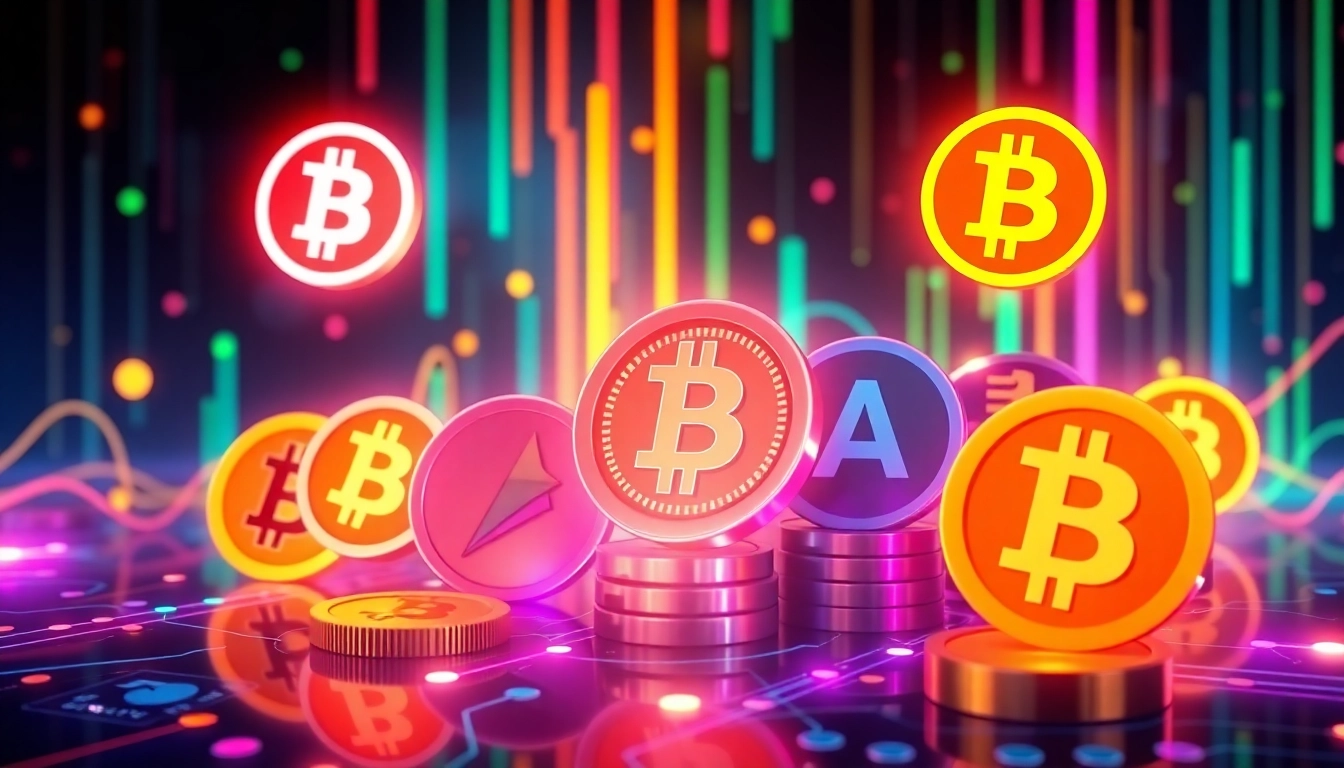Understanding the Landscape of Altcoins
What Are Altcoins and How Do They Differ from Bitcoin
Altcoins, a portmanteau of “alternative” and “coin,” encompass all digital currencies launched after Bitcoin’s inception. They serve as alternatives to Bitcoin, offering various technological features, use cases, and market niches. Unlike Bitcoin, which pioneered decentralized digital currency, altcoins often aim to improve upon Bitcoin’s architecture, introduce innovative functionalities, or target specific sectors within the blockchain ecosystem. Examples include Ethereum, which introduced smart contracts, and Litecoin, known for faster transaction processing. For those exploring crypto investments, understanding the fundamental differences between Bitcoin and altcoins is crucial, as altcoins typically present higher volatility but also greater potential for growth. To deepen your knowledge, explore our comprehensive guide on altcoins.
Types of Altcoins: Coins, Tokens, and Unique Variants
Altcoins can generally be categorized into three main types: coins, tokens, and unique blockchain variants. Coins like Ethereum, Litecoin, and Ripple have their own independent blockchains, functioning similarly to Bitcoin but with distinct features. Tokens, on the other hand, are built on existing blockchain platforms such as Ethereum, utilizing smart contracts to represent assets, rights, or access within specific ecosystems—examples include Uniswap (UNI) and Chainlink (LINK). The landscape also features specialized variants like stablecoins, pegged to fiat currencies, and meme coins, which often gain popularity through social media trends. Differentiating between these types is vital when evaluating investment opportunities or developing blockchain projects, as each has different technical foundations, security considerations, and potential for appreciation.
Historical Development and Market Growth of Altcoins
The evolution of altcoins traces back to the early days of Bitcoin’s success, triggering a proliferation of alternative cryptocurrencies aimed at capturing niche markets or solving specific issues. The launch of Ethereum in 2015 marked a pivotal shift, introducing programmable smart contracts that laid the foundation for decentralized applications and DeFi. Over time, the market has expanded exponentially, with thousands of altcoins now competing for attention and investment. The growth has been driven by technological innovation, increasing adoption of blockchain solutions, and societal shifts toward decentralization. However, this rapid expansion also introduces challenges like market saturation, scams, and regulatory uncertainty. For investors, understanding this developmental history provides context for current trends and future potential.
Investing in Altcoins: Key Considerations
Risks and Rewards of Altcoin Trading
Trading altcoins offers the allure of high returns, often outperforming Bitcoin during bullish phases, but equally entails significant risks. Volatility is heightened by factors such as low liquidity, speculative trading, and market manipulation tactics like pump-and-dump schemes. Conversely, successful investments in promising altcoins can yield extraordinary gains—there are stories of traders turning modest investments into multi-million dollar holdings within months. The key reward lies in diversification opportunities, exposure to innovative projects, and potential for outsized growth. Nonetheless, traders must exercise caution by performing thorough research, setting disciplined stop-loss orders, and avoiding FOMO-driven decisions. Balancing risk and reward is fundamental to sustainable altcoin trading success.
Top Factors to Evaluate Before Buying Altcoins
Before investing in any altcoin, investors should rigorously assess several critical factors. These include the project’s utility and use case, the development team’s credibility, the technology’s uniqueness, and the community support behind the coin. Market metrics such as trading volume, liquidity, market cap, and historical price trends also offer insights into a coin’s viability. Additionally, understanding the tokenomics—supply distribution, inflation controls, and incentivization mechanisms—can help identify sustainable projects. Regulatory considerations and potential for future adoption must also be factored in, especially in rapidly evolving legal landscapes. Proper due diligence ensures investments are well-informed rather than driven by hype alone.
Strategies for Diversifying Altcoin Portfolios
Diversification remains a cornerstone for managing risk in the volatile world of altcoins. Constructing a balanced portfolio involves spreading investments across different sectors—such as payments, DeFi, NFTs, and layer-1 blockchains—each with distinct growth drivers. Allocating a portion to well-established coins like Ethereum or Litecoin can provide stability, while smaller, promising projects like emerging DeFi tokens or innovative layer-2 solutions can offer growth potential. Regular portfolio rebalancing, leveraging sector rotation, and employing dollar-cost averaging are effective strategies to navigate market swings. Furthermore, staying informed through market analysis and news helps adjust holdings proactively, maximizing gains and minimizing losses in a dynamic environment.
Analyzing the Top Altcoins for 2025
Emerging Hidden Gems with High Potential
2025 promises to be a fertile year for discovering altcoin gems that could outperform mainstream cryptocurrencies. These projects often exhibit innovative use cases, strong developer communities, and strategic partnerships. Examples include early-stage layer-1 blockchain initiatives focusing on scalability, privacy, or cross-chain interoperability. Conducting technical analysis and scrutinizing whitepapers can help identify undervalued projects with high growth potential. Monitoring social signals, developer activity, and liquidity dynamics further refine the selection process. Investing early in such hidden gems can be rewarding, but demands rigorous due diligence to avoid high-risk traps.
How to Identify Altcoins That Outperform Ethereum
Ethereum continues to lead in the smart contract platform space, but certain altcoins are poised to accelerate past it in specific niches. To identify these outperformers, evaluate technological advancements such as scalability solutions, security features, and user adoption metrics. For instance, layer-2 solutions aiming at reducing fees and transaction times may gain significant traction. Market sentiment analysis and the project’s roadmap visibility are also crucial indicators. Comparing developer activity on GitHub, partnership announcements, and community engagement provide qualitative signals of future outperformance. An informed approach combining technical and fundamental analysis enhances the likelihood of spotting the next big contender surpassing Ethereum.
Using Technical and Fundamental Analysis for Altcoin Selection
Combining technical and fundamental analysis enhances decision-making in the volatile altcoin market. Technical analysis involves studying price charts, volume data, and key indicators like RSI, MACD, and moving averages to pinpoint entry and exit points. Fundamental analysis scrutinizes project fundamentals, such as tokenomics, roadmaps, team credibility, and market positioning. For example, a strong project with technological innovation, growing user base, and positive news can be a solid candidate for investment. Employing both methods mitigates risks associated with hype cycles and market manipulation, providing a balanced view for identifying promising altcoins with growth potential.
Security and Best Practices in Altcoin Trading
Protecting Your Digital Assets with Wallets
Safeguarding your altcoins requires choosing the right storage method: hot wallets for convenience and cold wallets for enhanced security. Hardware wallets like Ledger or Trezor provide offline storage, significantly reducing exposure to hacking. Using multi-signature wallets and setting strong, unique passwords further fortifies your assets. Regular backup of seed phrases and employing trusted security practices is essential. Education regarding phishing scams and malicious links also helps prevent theft. Building a secure storage habit is crucial, especially as your portfolio grows in size and value.
How to Avoid Common Altcoin Scams and Rug Pulls
The altcoin ecosystem is rife with scams, including rug pulls, pump-and-dump schemes, and fake tokens. Vigilance begins with thorough project research—scrutinize the credibility of the development team, read whitepapers, and verify smart contract audits. Avoid projects with anonymous teams, overly aggressive marketing, or suspiciously low liquidity. Emphasize security measures like reputation checks and community vetting. Tools such as blockchain explorers enable transparency assessments, revealing token distribution and contract activities. Staying ahead of scams ensures your investments remain protected and reduces exposure to losses caused by malicious actors.
The Future of Altcoins and Digital Currency
Predictions for Altcoin Innovation and Adoption
The trajectory of altcoins in the coming years is poised for significant innovation, driven by increasing mainstream adoption, technological breakthroughs, and expanding use cases. Trends such as DeFi, NFTs, and Web3 integrations will catalyze new altcoin projects that prioritize scalability, privacy, and interoperability. Companies and institutions exploring blockchain integration will boost altcoin utility and legitimacy. Experts forecast that some altcoins will become integral to digital economies, possibly challenging traditional financial systems, reshaping how value is transferred and stored globally.
Impact of Web3 and Decentralization on Altcoin Ecosystems
Web3 promises to decentralize the internet, empowering users with ownership and control over their data and assets. This paradigm shift will significantly enhance altcoin ecosystems, fostering greater user participation, governance, and innovation. Decentralized applications (dApps) built on altcoins will become more prevalent, driving adoption and network effects. As decentralization matures, we expect to see more robust, censorship-resistant platforms that challenge centralized services, further solidifying altcoins’ roles in the emerging digital infrastructure.
Regulatory Developments and Their Effect on Altcoin Markets
Regulation remains a critical factor shaping the future of altcoins. Governments worldwide are contemplating frameworks to address AML (Anti-Money Laundering), KYC (Know Your Customer), and securities laws. While clear regulations can instill confidence and foster growth, overly restrictive policies might hinder innovation or push projects underground. Successful adaptation involves the development of compliant, transparent projects that align with legal standards. Staying informed of regulatory changes ensures that investors and project developers can navigate this evolving landscape, maximizing opportunities while minimizing legal risks.



